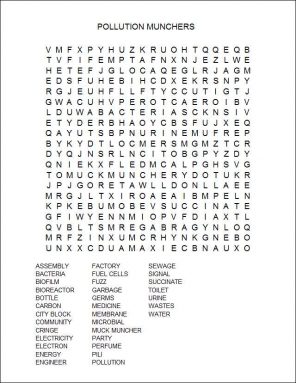Microbes mine treasure from waste
Hard-working microbes are turning wastes into things people need
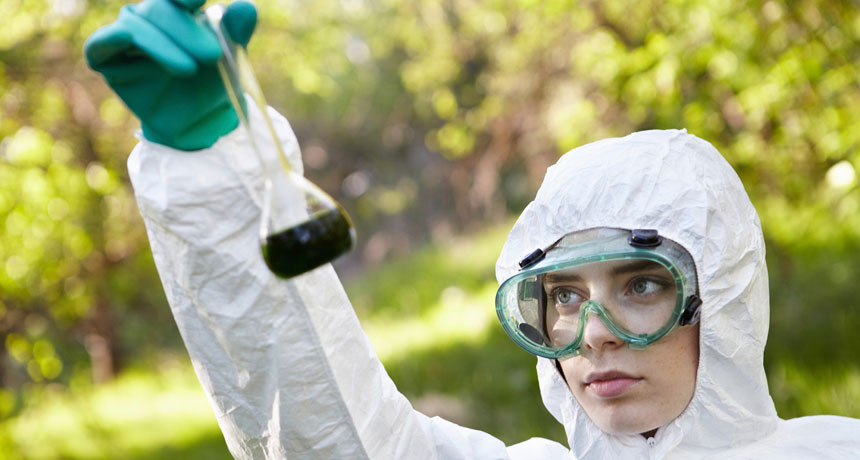
Would you drink this? Bioreactor technology can turn such yucky water into something clean enough to drink.
Alexandr Dubovitskiy/istockphoto
Moldy food, dirty toilet water and bags of garbage. What do these disgusting things have in common? Tiny, one-celled microbes called bacteria love them. These germs are too small to see with your eyes, but they live all around you. Bacteria set up camp in sewage pipes, ponds and dirt. They also live in your house, on your food, in your mouth and in your gut. Some of these germs make you sick. That is why it’s important to wash your hands after going to the bathroom or taking out the trash.
Many people are afraid of bacteria. But they usually cause no trouble at all, notes Anthony Tong. He is a chemist at Canada’s Acadia University in Wolfville, Nova Scotia. “Actually they clean up all the organic waste human beings create on the planet,” says Tong. (By organic, he refers to chemicals containing the basic building blocks of life on Earth — especially carbon.) Bacteria will munch through such wastes on their own. But people also can put these hungry bugs to work inside miniature factories. And unlike human employees, bacteria never rest.
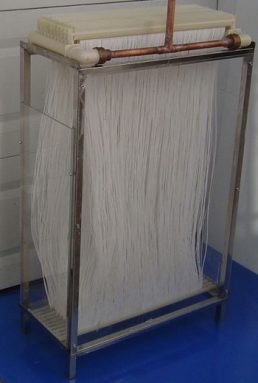
A device that runs on bacteria is called a bioreactor. Tong and his coworkers, for instance, develop bioreactors to clean dirty water. Some of these tiny factories produce useful products, such as fuel or chemicals. Others — called microbial fuel cells — convert waste into electricity.
All of these systems harness bacteria to turn wastes into things people need. But bacteria have the potential to work even harder than they already do. Scientists can tinker with a microbe’s genes — the codes that tell it how to grow and behave — in order to make it stronger. Researchers also are learning to speak the microbes’ language. This will allow engineers to recruit different species to work together in a microbial assembly line.
Researchers hope to use bioreactors to bring out the best in bacteria. The bugs can become helpful and productive workers instead of scary, disgusting germs.
Love that dirty water
Wastewater contains two types of pollutants: chemicals and germs. If either escapes into rivers and streams, it may sicken people and wildlife. To prevent that, Tong’s team actually adds more microbes to the water, housing them inside a bioreactor. Why would you add germs to dirty water? Tong explains, “We use one bad thing to kill the other bad thing.”
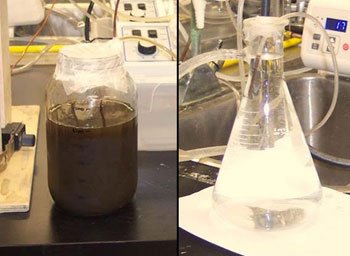
Many cities and towns around the world already use this technology. When people in the small Canadian town of Cookville in Nova Scotia shower, flush their toilets or wash their hands, the dirty water flows through one of these devices.
To keep the device running, engineers have to make sure that the microbes are comfortable. If the water is too hot or too cold, they might not thrive. Also, if the water flows past them too quickly or doesn’t churn around enough, the bacteria might not find and break down all of the bad chemicals.
To further complicate things, many different types of bacteria exist. Each has its own favorite conditions and its own favorite “foods” — the chemicals it needs to live and grow. When the wastewater contains lots of a favorite food, the microbes throw a party. They gorge until that food is gone. But some water might not contain any food that they like. Then the worker germs will die. Tong and his team have to match the pollutants in the wastewater with the right microbial workers. A successful membrane bioreactor keeps its tiny workers as happy and healthy as possible. Then the scientists can step back and let the bacteria work, explains Tong.
Right now, his team is tackling a big problem. Medicines often end up in rivers, streams and oceans. Whenever you take a pill, some of that drug is absorbed into your body to help make you feel better. A lot of it, however, moves through your body and is removed, or excreted, in urine. Most facilities that clean wastewater don’t have a way to deal with excreted drugs. So these chemicals end up polluting the environment. Tong hopes that his team can build a membrane bioreactor that will clean all traces of such drugs from wastewater.
Power from pee
You can do more with wastewater than just clean it, says Daniel Hassett. Microbes can turn dirty water into electricity, notes this microbiologist at the University of Cincinnati in Ohio. Hassett invented a baseball-bat-size device called a microbial fuel cell. It’s like a battery filled with munching microbes that live inside of it and create electricity.
“Bacteria don’t take vacations,” says Hassett. “They just eat and eat and eat and eat and eat.” As they eat, reactions inside their bodies change their food into new chemicals. This process generates energy. A fuel cell converts that energy into a form people can use, such as electricity. To keep a microbial fuel cell going, you just need to feed the bacteria. Hassett’s team has built microbial fuel cells that run on dirty water, food wastes and even human urine!
Power from pee seems like magic. (In fact, some research teams are putting it to work already.) So why doesn’t everyone have a microbial fuel cell inside his or her toilet, capturing pee and turning it into electricity? The problem: This technology isn’t quite good enough yet. Regular batteries provide much more electricity than microbial fuel cells.
But Hassett and other scientists are working to boost the fuel cells’ output. One way is to improve the workers. They can change a bacterium’s genes to make it better at a specific task. This is almost like giving the bug super powers.
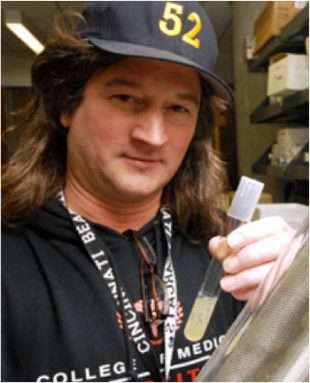
Why are these super-bugs so powerful? One difference is that they have many more tiny hairs, called pili. These hairs allow them to stick to a surface, helping create a group. Inside a fuel cell, this group — or biofilm— forms on a metal surface that conducts electricity. As the microbes munch away, subatomic particles called electrons get released. Usually, the electrons that bacteria release when they feed will escape into the environment. But inside the fuel cell, they travel down the pili to the metal surface where they create an electrical current. The more pili the bacteria have, the more electrons the device can capture. And that means the more electricity it can produce.
The membrane bioreactor and the microbial fuel cell both rely on a complicated device to house the tiny workers. However, some bioreactors don’t need any fancy housing. Often, a giant vat full of bacteria filled with their food is all it takes. For instance, a lot of gasoline in the United States contains ethanol, a type of fuel made from corn. Many factories simply mix mashed corn with bacteria in large vats. Then they wait for the hungry bacteria to turn sugars in the corn into ethanol, a type of alcohol. This, too, is a type of bioreactor.
Mini assembly lines
Ethanol bioreactors contain only one type of bacterium. And it tackles just one job. The biofilms in Hassett’s fuel cells also contain only one kind of bacterium: the super-bug he created. He plans to build more new bugs that can team up. Each species would have a different super power. One might focus on breaking down some waste while another might produce electricity. Such a community of specialized workers could help him produce 10 times the power that just one type of microbe could.
Other researchers also want to recruit different species of bacteria into a biofilm. But instead of electricity, they aim to produce chemicals that people need. In the wild, bacteria form biofilms all of the time. A slimy rock in a river is covered with biofilms. The white goo on your teeth when you forget to brush is also a biofilm.
If scientists could pick and choose the bacteria to grow inside a biofilm, they might create a miniature assembly line. For example, one bacterium might feed on rotting food and produce sugars. Then, another bug might eat those sugars and produce succinate [SUX-in-ate]. This chemical is a key ingredient in the production of some perfumes and medicines.
Currently, people make chemicals in big factories that might be the size of a city block or bigger. A biofilm factory could produce the same chemicals in a much smaller space. And it could help get rid of a city’s garbage at the same time. This could save energy while producing less pollution than a normal factory.
But it’s not easy to make bacteria collaborate. Researchers haven’t yet built a biofilm factory that could actually take in garbage, send it through an assembly line and spit out the other end some chemical that people can use.
Chatting with germs
In order to get bacteria to work together, biochemists need to learn their language. In the wild, bacteria “talk” to each other using chemicals. They use these signals to tell each other when to form a biofilm and when to leave a community.
Arul Jayaraman, a chemical engineer at Texas A&M University in College Station, was one of the first to use this chemical language to control biofilms. His team made the job simpler by working with just one type of microbe. They modified its genes so it always sent out the same signal, over and over: “Break up and swim away.”
Jayaraman’s team also created another new type of bacterium that would always listen for this signal. Biofilms made from the listening bacteria would break apart whenever they detected the signal.
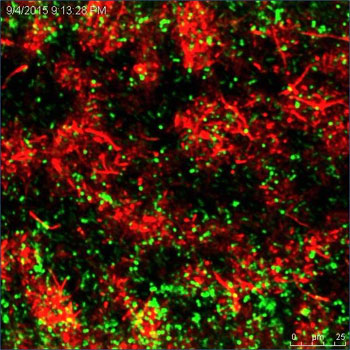
This research aims to control the types of germs that settle into a biofilm. Explains Jayaraman, “We can design these communities and mix them in different ways.” His team of mix masters can tell a bacterium to move in or pack up and leave.
Once researchers can control biofilms, they might use them to produce just about any chemical that people need. Future mix masters could set up tiny factories with assembly lines of super-bug workers. They could feed the bugs dirty water, garbage or even pee. These muck munchers could clean up the planet while also producing things that people need — from important chemicals and clean water to electricity. Engineers have already built urinals with microbial fuel cells inside. The microbes eat up urine and make enough energy to power a light bulb. Just imagine — someday, your entire house could get its electricity from microbes sipping toilet water and munching garbage.
All bioreactors contain living communities. No other technology we rely on today lives, eats or breathes. But microbes inside bioreactors do all of these things. Someday, these tiny germs may no longer make people cringe. Instead, they could help power our world in a safe, clean way.
Power Words
(for more about Power Words, click here)
bacterium (plural bacteria) A single-celled organism. These dwell nearly everywhere on Earth, from the bottom of the sea to inside animals.
biofilm A gooey community of different types of microbes that essentially glues itself to some solid surface. Living in a biofilm is one way microbes protect themselves from stressful agents (such as poisons) in their environment.
bioreactor A machine in which microbes or other living things perform work or produce something such as fuel or chemicals.
chemical A substance formed from two or more atoms that unite (become bonded together) in a fixed proportion and structure. For example, water is a chemical made of two hydrogen atoms bonded to one oxygen atom. Its chemical symbol is H2O.
chemical reaction A process that involves the rearrangement of the molecules or structure of a substance, as opposed to a change in physical form (as from a solid to a gas).
electric current A flow of charge, called electricity, usually from the movement of negatively charged particles, called electrons.
electron A negatively charged particle, usually found orbiting the outer regions of an atom; also, the carrier of electricity within solids.
engineer A person who uses science to solve problems. As a verb, to engineer means to design a device, material or process that will solve some problem or unmet need.
ethanol A type of alcohol, also known as ethyl alcohol, that serves as the basis of alcoholic drinks, such as beer, wine and distilled spirits. It also is used as a fuel, often mixed with gasoline, for instance.
excrete To remove waste products from the body, such as in the urine.
fuel cell A device that converts chemical energy into electrical energy. The most common fuel is hydrogen, which emits only water vapor as a byproduct.
gene (adj. genetic) A segment of DNA that codes, or holds instructions, for producing a protein. Offspring inherit genes from their parents. Genes influence how an organism looks and behaves.
germ Any one-celled microorganism, such as a bacterium, fungal species or virus particle. Some germs cause disease. Others can promote the health of higher-order organisms, including birds and mammals. The health effects of most germs, however, remain unknown.
membrane A barrier which blocks the passage (or flow through of) some materials depending on their size or other features. Membranes are an integral part of filtration systems. Many serve that function on cells or organs of a body.
microbe Short for microorganism. A living thing that is too small to see with the unaided eye, including bacteria, some fungi and many other organisms such as amoebas. Most consist of a single cell.
microbial fuel cell A device that relies on microbes to initiate chemical reactions to generate electricity. These devices can use waste materials, including sewage and manure, to produce energy cleanly. (see also fuel cell)
microbiology The study of microorganisms, principally bacteria, fungi and viruses. Scientists who study microbes and the infections they can cause or ways that they can interact with their environment are known as microbiologists.
organic (in chemistry) An adjective that indicates something is carbon-containing; a term that relates to the chemicals that make up living organisms.
pilus (plural pili) A tiny hair-like structure found on a bacterium.
pore A tiny hole in a surface.
sewage Wastes — primarily urine and feces — that are mixed with water and flushed away from homes through a system of pipes for disposal in the environment (sometimes after being treated in a big water-treatment plant).
succinate (also succinic acid) A chemical that many microbes and living cells use in reactions. Factories use this chemical in the production of foods, perfumes and medicines, among other things.
wastewater Any water that has been used for some purpose (such as cleaning) and no longer is clean or safe enough for use without some type of treatment. Examples include the water that goes down the kitchen sink or bathtub or water that has been used in manufacturing some product, such as a dyed fabric.
Word Find (click here to enlarge for printing)
